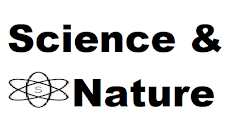In the cold and remote corner of our solar system, a solitary spacecraft presses on with its mission—one that started more than 47 years ago. Voyager 1, launched by NASA in 1977, has gone further than any man-made object in history. It has cruised beyond the giant planets, broken free from the Sun's gravity, and now drifts through interstellar space. But recently something peculiar—maybe even frightening—was discovered on the periphery of the solar system.
The Journey So Far
Voyager 1’s primary mission was to fly by Jupiter and Saturn, capturing unprecedented images and data. It accomplished this in the early 1980s and then continued on a path that eventually took it beyond the influence of the planets. In 2012, it officially crossed the heliopause—the invisible boundary where the solar wind from the Sun can no longer push against the interstellar medium. This moment marked its entry into interstellar space.
Now more than 15 billion miles away from our planet, Voyager 1 continues to function, transmitting useful information. It speaks in its 1970s technology, and although its signals take more than 22 hours to transmit, what it transmits is nothing short of amazing.
A Disturbing Signal
In late 2023, astronomers who are tracking Voyager 1 picked up something peculiar in its signals. The spacecraft started to transmit strange data—odd fluctuations in cosmic ray intensity and an odd, low-frequency "hum" that had never been seen before. These signals didn't correspond to anything Voyager had seen before.
Scientists at the NASA Jet Propulsion Laboratory (JPL)
called the phenomenon "unsettling." Dr. Linda Spilker, a Voyager
project scientist, stated:
“We’re seeing energy patterns that don't align with known sources. It's as if Voyager has entered a region where the rules are different—where our models just stop working.”
What Could It Be?
The scientific community has proposed several explanations—some more grounded than others. Here are the leading theories:
Anomalous Plasma Region:
Voyager could have moved into a section with high, unknown plasma or electromagnetic turbulence. It might be a bubble of space where interstellar material does not act as it should, possibly influenced by old supernova remnants or unseen galactic forces.
Cosmic Shockwave
Others theorize Voyager ran into the aftermath of a shockwave from a faraway stellar explosion. Such a shockwave can bear intense radiation and warp space around itself. The low-frequency rumble could be a sign of such an event.
Exotic Physics:
A more fanciful hypothesis proposes the space ship is approaching a limit that pushes the boundaries of our physics—maybe connected to dark matter interactions or undiscovered particles. Such ideas are still purely theoretical, but they're now being looked at more seriously.
Artificial Origin?
Though the majority of scientists dismiss this, a vocal minority in the SETI community have made it possible—a tiny chance—that the signal might have an intelligent source. The frequency modulation and pattern are unusual features, however, no clear-cut proof so far.
The Silence That Followed
Following weeks of these unusual readings, Voyager 1 went quiet for a short time—eliciting much alarm. Was it destroyed? Had it encountered something hostile or intrinsically incompatible with Earth technology? Luckily, the signal returned, albeit with even more unpredictable data, implying the environment through which it's traveling is becoming more turbulent—or strange.
What's Next?
Voyager 1 is losing power. NASA has put its estimated date of ceasing transmission at approximately 2025. Scientists are working frantically to process all the data it transmits before then. This most recent finding, although still mysterious, is compelling researchers to rethink long-standing assumptions regarding the boundary of our solar system and the form interstellar space will take.
As put by Dr. Ed Stone, former Voyager project
scientist:
"We designed Voyager to venture into the unknown. But the unknown is turning out a lot stranger than we could possibly have imagined."
Final Thoughts
What Voyager 1 discovered won't be frightening in the Hollywood sense, but it is profoundly humbling. We're reminded that space isn't empty—space is big, messy, and still full of things that we can hardly grasp. The fact that a device created in the 1970s is still advancing the frontiers of human understanding is inspiring and chilling.
One thing is for sure: whatever it is that comes next,
Voyager 1 has already altered our knowledge of the universe—and it may not be
finished yet.




.jpg)
0 Comments